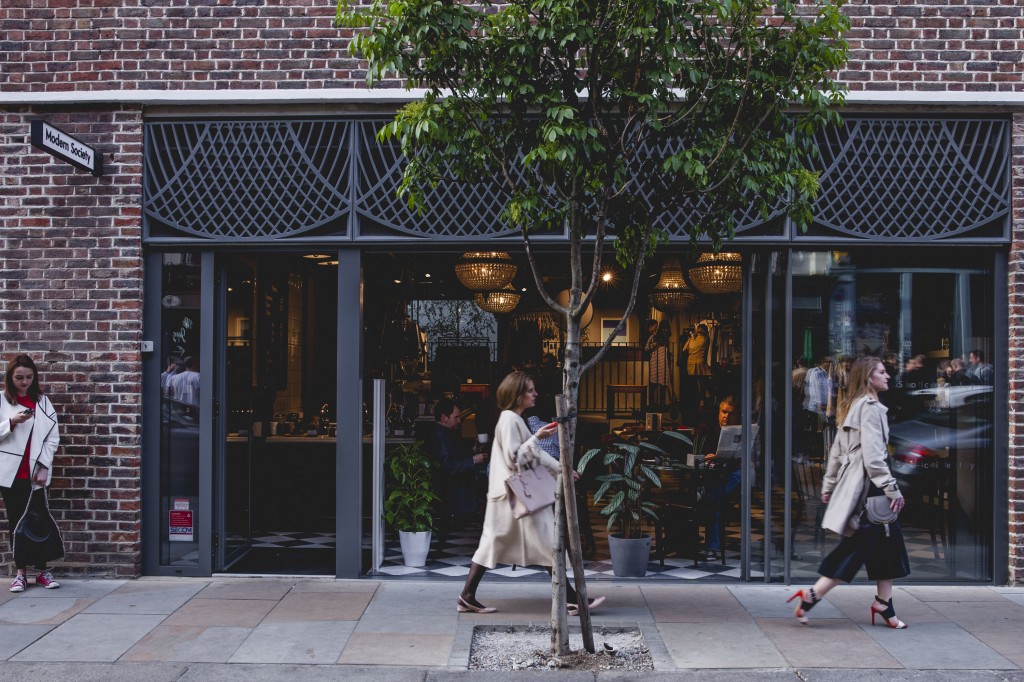When a person walks into your store, what’s the first thing they notice? The carefully positioned products or the nice flowers on the till? Or is it something more instinctive than that, like the smell?

If you look at what the supermarkets have been betting on for years, you’d say the latter. The high street grocery behemoths have long directed the ventilation units from their in-store bakeries towards the entrance of their stores to catch passers by. And while the pulling power of that deliciously smelling fresh bread has been taken advantage of by everyone from bakeries to home-sellers, if you look elsewhere on the highstreet, the use of smell as a means for communicating with would-be customers is still a practice that’s in its infancy.
To find out why every retailer needs to understand the power of those little olfactory sensory neurons better, we spoke to Simon Harrop, director of The Aroma Company, who has been helping brands captilise on the power of scent; Nazifa Movsoumova, founder of Modern Society, who curate luxury goods from around the world; and Flo Sadler of Pearl and Groove bakery, whose on-site kitchen entices customers every day.
Why is it so important for retailers to think about scent?
As the battle to keep people shopping in real life, and not on their sofa, continues, businesses are forced to be increasingly creative with how they encourage people to keep coming back. “It isn’t just about making your store look pretty,” says Harrop. “To do this they need to appeal to all the senses and especially those senses which are more closely associated with driving emotions. The sense of smell has a direct connection with the emotional centre of the brain [...] so if retailers really want to make a powerfully compelling, emotional, almost subconscious impact on shoppers they need to think about how their stores smell. After all, nobody would enter a store that smelled of damp carpets or dirty changing rooms!”
There’s no chance of this at Modern Society, whose four signature candles burn on rotation in store. “It's all about creating a multi-sensory experience,” offers Movsoumova. “Though the high quality of our product is crucial, we also want to conjure a feeling that complements our brand and that customers can take away with them. Whether it’s a feeling of a pleasant memory or something new - we want each scent to become synonymous with Modern Society.”

How to incorporate scent into your in store strategy
Whether you’re about to launch your first pop-up or are an established retailer hoping to develop a signature scent, the first thing you need to do is figure out how that scent will align with your brand. If you want to create a scent from scratch, it’s particularly wise to partner with experts.
“The scent absolutely must be congruent with the brand,” explains Harrop. “Generic, off-the-shelf aromas offered by so many of the practitioners who have entered this field in recent years are creating little more than Muzak for the nose. This has the potential to alienate shoppers.”
And the more unique your smell, the more you’ll find customers noticing it. “I guess it’s true what they say, retail is detail!” says Movsoumova. “We chose cosy, earthy scents that are not only inviting, but complement the store’s interior.”
Another approach that we’ve seen more and more at Appear Here is for businesses to collaborate with cafes and have an in-store food offering. Flo Sadler offers some thoughts on why the smell of freshly baked food in particular can be such a pull. “Being a bakery, the smells coming from our ovens are particularly sweet and enticing,” says Sadler. “You can smell the bakery from at least five doors down so it’s the first thing every customer mentions on arrival. It's all part of the experience as they’re ready to eat the cakes before they’ve even arrived at the shop.”

What you can learn from the brands doing it best
Harrop is adamant that the untapped potential of people’s sense of smell is huge, and those that are beginning to make progress in this area are doing so with a holistic marketing strategy that incorporates all the senses from the word go, meaning that “what a shopper sees, what they hear and what they smell, taste or touch are all congruent and aligned with the brand expectations.
“Very few retailers seem to get this,” he adds. “Their store designers have all been trained visually. The store is designed and built and only afterwards do they think about how it should sound or smell.”
Harrop has a surprising answer to which brand he thinks is doing this best. “In my view its Helm Bank in Colombia,” he says. “They started by working with us to define their brand as a set of expressions across all five senses. This was then made real and brought to life in the retail bank experience, resulting in 99% customer satisfaction, 50% uplift in sales, 50% more account openings and doubling of the share price.”
